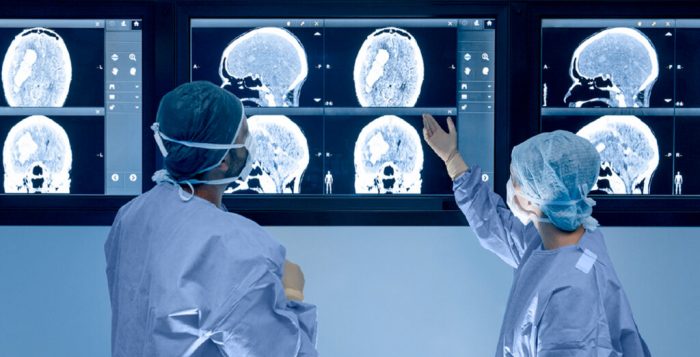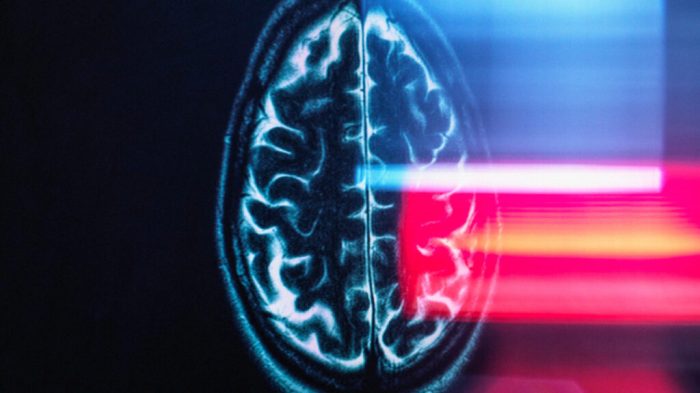Nerve damage from neurodegenerative conditions, traumatic injuries, and certain eye conditions leads to disability and death for millions of people in the United States. Currently, doctors consider such damage irreversible.
However, researchers at The Ohio State University Wexner Medical Center have discovered a new type of human immune cell that appears to prevent and reverse nerve damage in the optic nerve and spinal cord.
This finding could allow researchers to create more advanced neurodegenerative immunotherapies.
These therapies might offer fresh hope to people with currently incurable neurological conditions, including Alzheimer’s disease, multiple sclerosis, stroke, and Parkinson’s disease. They might also help treat central nervous system (CNS) damage from injury or infection.
“I treat patients who have permanent neurological deficits, and they have to deal with debilitating symptoms every day, “says Dr. Benjamin Segal, professor and chair of the Department of Neurology at The Ohio State College of Medicine and co-director of the Ohio State Wexner Medical Center’s Neurological Institute.
“So the idea of being able to restore neurological function and take that burden away from my patients is really amazing.”
Funded by the National Eye Institute (NEI), the National Institutes of Health (NIH), the Wings of Life Foundation (C.Y.), and the Dr. Miriam and Sheldon G. Adelson Research Foundation, the study appears in the journal Nature Immunology.
The emerging field of immunotherapy
Immunotherapy therapies alter the immune response by stimulating it or using the body’s own immune cells to treat disease. Over the past few decades, scientists have begun developing them to tackle a wide range of medical conditions.
Doctors already use immunotherapies to treat certain types of cancer. They help the immune system to recognize and destroy cancer cells.
Other researchers are investigating whether immunotherapy could help prevent or treat neurological disease.
Researchers have been extensively testing immunotherapies that increase the clearance rate of certain proteins whose accumulation has links with neurological diseases, such as Alzheimer’s disease, Parkinson’s disease, frontotemporal dementia, and dementia with Lewy bodies.
Scientists have already created T-cell mediated immunotherapy approaches that target proteins linked with these neurological diseases, such as amyloid-beta, tau, and alpha-synuclein proteins.
Immunotherapy may also present opportunities to prevent and treat nerve damage by activating alternative immune pathways in response to CNS damage.
A 2014 study found that anti-inflammatory or immunoregulating (M2) macrophages are critical for remyelination, which is a form of nerve repair.
The study
The researchers examined immune cells in fluids and spinal cord tissues collected from mice with optic and spinal nerve damage.
Within these fluids and tissues, the team found a unique type of granulocyte. Granulocytes are a category of white blood cells. Neutrophils are the most common kind of granulocytes.
Neutrophils are scavengers that help destroy pathogens or other unwanted particles in the body. The new type of granulocyte that the scientists identified behaved like an immature neutrophil.
This newly discovered granulocyte helped protect neural cells and tissues from damage in the mice. It also encouraged nerve cell regeneration by secreting a mix of beneficial growth compounds. The team also found a human cell line with similar neuroprotective properties.
“This type of cell actually secretes growth factors to rescue dying nerve cells. It can also stimulate the surviving nerve cells to grow new fibers once they’re severed or damaged in the [CNS], which is really unprecedented,” says Dr. Segal. “This can potentially lead to therapeutic breakthroughs for a wide range of conditions by repairing these nerve pathways.”
However, researchers have a long way to go before doctors can use immune cells, such as this newly discovered granulocyte, to treat humans.
The team’s first major hurdle will be figuring out how to harness the power of this new immune cell and enhance its natural healing effects by growing it in a laboratory setting. Next, they’ll have to prove their newly proposed therapy is both effective and safe in humans.
In the future, the team hopes that doctors can inject these novel cells into people with chronic cognitive deficits to slow down or halt degenerative decline.
Dr. Segal concludes that they have got a lot of work left to do to make their laboratory findings relevant in a clinical setting, but says he is optimistic about the road ahead:
“There’s so much that we’re learning at the bench that has yet to be translated to the clinic, but I think there’s huge potential for the future.”





